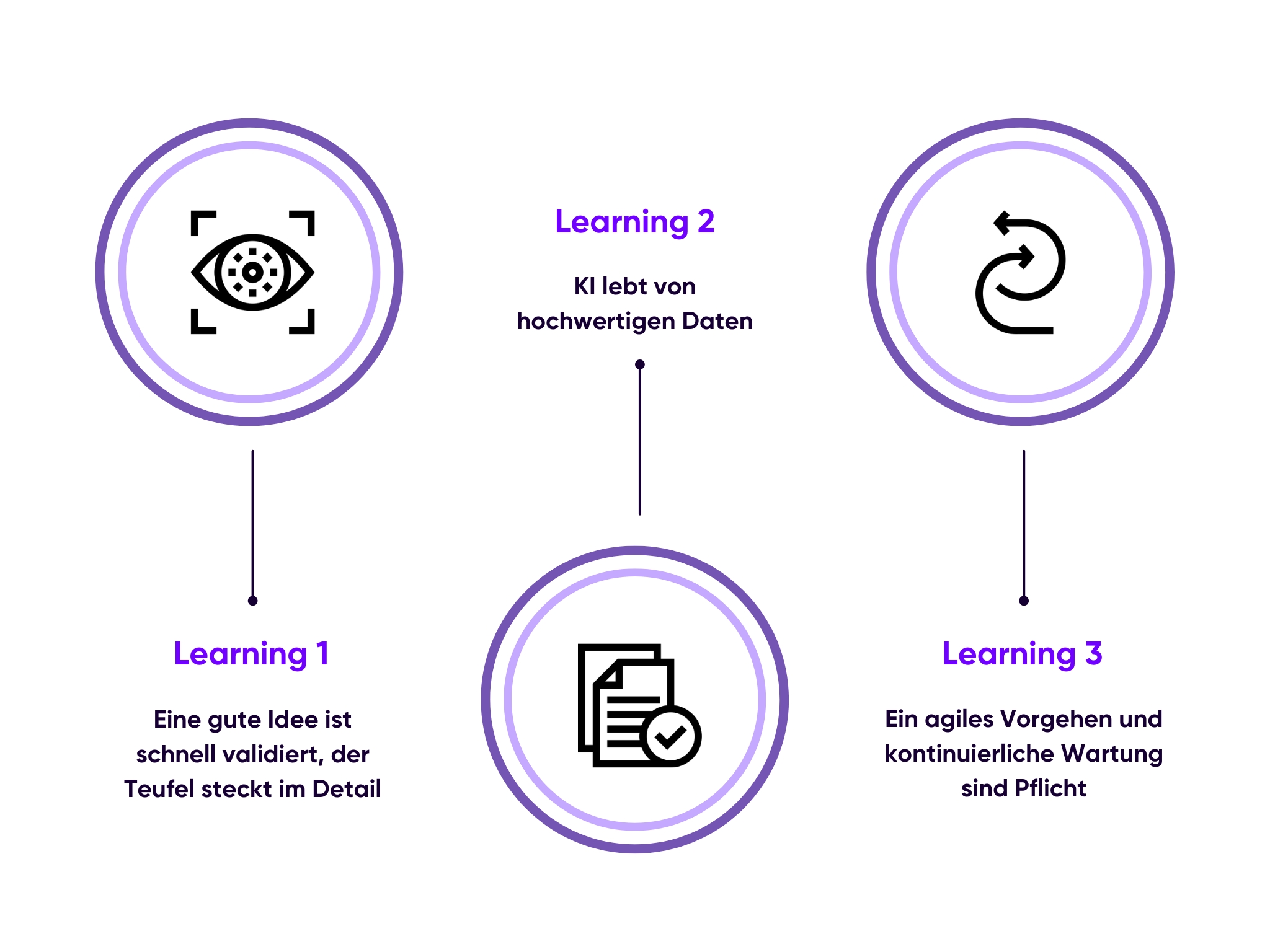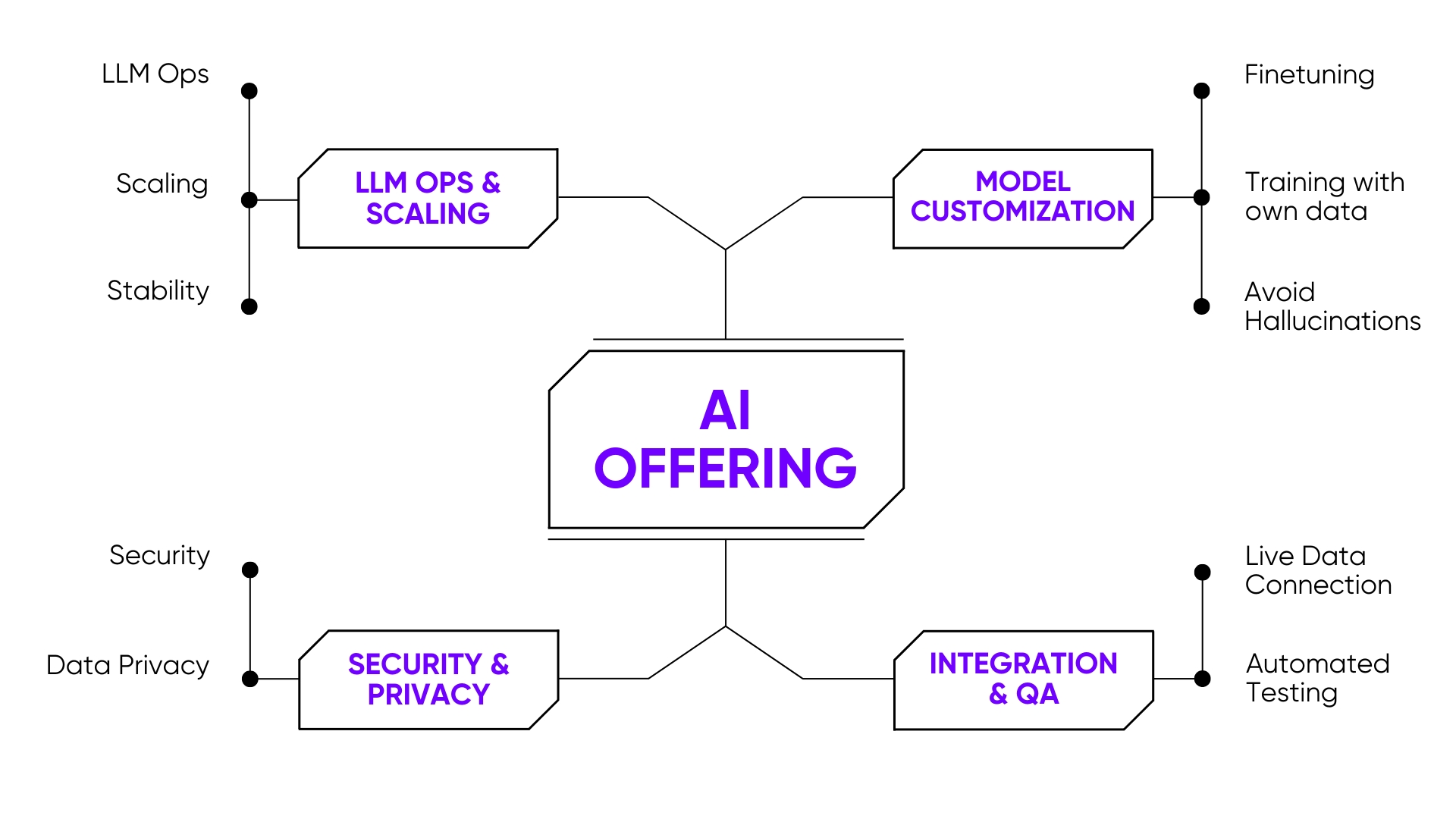The development of AI is progressing rapidly and more and more Swiss companies are integrating AI technologies into their existing internal processes.
According to a survey conducted by Handelszeitung, 97% of managers surveyed stated that the integration of AI into business processes is essential.
As AI progresses, so do the capabilities of AI assistants. They take on complex tasks and become valuable tools for companies to optimize processes and make data-based decisions. data-based decisions make data-based decisions.
As powerful as ChatGPT, Gemini, Meta AI and the like are, they are often not designed for company-specific challenges, sensitive data and customized workflows. A market study by the HWZ confirms that there is often a lack of company-specific solutions based on self-trained models and proprietary data.
This is why company-specific AI solutions are becoming increasingly interesting. They are tailored precisely to the challenges, data and goals of a specific company. That sounds promising, doesn’t it? And it is. They open up enormous opportunities, ranging from efficiency gains to new, innovative customer offerings.
For decision-makers and managers in the IT sector, this not only raises the question of whetherbut above all about how. How can such solutions be strategically anchored, technologically implemented and sustainably developed?
In this article, we show how we at Panter implemented the customized AI solution Pantobot ourselves and what important lessons we learned in the process.
An AI that really understands our company
The idea for our own AI solution arose from several needs and objectives:
- Internal innovation: The process began with a design developed by Claudio Romano. This prototype served as a basis on which other employees could build.
- User-friendly interaction: A conversational interface, as known from ChatGPT, is ideal for interacting intuitively with data. We therefore opted for a chat solution tailored to Panter.
- Strategic realignment: We wanted to strengthen our positioning in the field of AI development, particularly in view of the upcoming Swiss {ai} Weeks.
The main challenges we wanted to tackle with the Pantobot were:
- Optimize knowledge management: Scattered or poorly documented knowledge should be made centrally and easily accessible.
- Simplify system access: Access to various internal systems should be possible via a single interface.
- Linking data: The bot should be able to pull information from different sources and link it together.
How the Pantobot works
For the development of the Pantobot, we relied on a modern and flexible technology stack:
- Foundation: A Next.js application serves as the basis, providing a modern and solid foundation for web applications.
- The heart of the AI: Vercel’s AI SDK allows various AI models to be flexibly integrated. Our Pantobot currently works with ChatGPT, Llama 3, DeepSeek and Google Gemini, depending on requirements.
- Data sources: The Pantobot is currently connected to our GitLab. In the future, other sources such as Google Chats, Google Drive, Notion and our website will be integrated. As a small but entertaining gimmick, we have also connected Spotify: The bot can search, play or pause songs on demand.
Flexible integration into existing IT systems
In addition, Pantobot can be seamlessly integrated into existing system landscapes as an independent chat interface. The architecture is designed in such a way that the chat interface and data interaction are decoupled from each other. This means that company-specific data sources, semantic search systems or RAG pipelines can be connected on a modular basis.
In contrast to many conventional solutions, our AI solution enables particularly close integration with the integrated data. In addition, interactive widgets can be integrated directly into the user interface: This means that documents can not only be displayed in the chat, but also edited or commented on directly.
The Pantobot is therefore an example of how we can use flexible, interactive and expandable architecture to create customized, AI-supported systems.
What you should know before your next AI project
The development of the Pantobot was an instructive process. We have summarized our most important findings, which can also be applied to other AI projects, here:

Learning 1: A good idea is quickly validated, the devil is in the detail
An initial proof of concept (PoC) is often implemented quickly thanks to modern AI frameworks. However, our experience shows a clear 80/20 rule:
- 20% of the time is spent on the first PoC to prove feasibility
- However, 80% of the time is required for the actual project, which follows the PoC. This phase includes steps such as robust implementation, connection to live data, testing and ensuring stability.
Learning 2: AI thrives on high-quality data
Without high-quality and relevant data, even the best AI solution cannot fulfill its potential. Two aspects are crucial here:
- Data quality: The accuracy, completeness and consistency of the data are fundamental.
- Data availability: The required data must be accessible. Data silos in the company often have to be broken down first.
Learning 3: An agile approach and continuous maintenance are mandatory
AI projects are not one-off projects. We consistently rely on agile development:
- Iterative approach: We start with a prototype or a minimum viable product (MVP) and gradually expand the functionality based on user feedback.
- Monitoring and maintenance: AI models must be continuously monitored, as data changes and performance can change. Regular retraining and adjustments to new model versions (e.g. an upgrade from GPT-4 to a possible GPT-5) are essential. This requires automated tests to ensure that the bot continues to provide correct and consistent answers.
Based on the development of Pantobot, we have created a comprehensive range of services to help companies get started with the productive use of AI.

What are the benefits of a company-specific AI solution?
Customized AI solutions such as Pantobot create concrete added value in numerous areas of the company:
- Centralized knowledge management: AI-supported chatbots can make scattered knowledge accessible and retain know-how beyond individual employees in the company.
- Efficient process automation: The automation of routine tasks and workflows reduces operating costs and relieves employees.
- Targeted promotion of innovation: The use of modern technologies not only creates competitive advantages, but also motivates teams to continuously work on new, creative ideas.
Conclusion: The path to your own AI solution is feasible and worthwhile
The development of a company-specific AI solution is a strategic investment that goes far beyond a technological gimmick. Our Pantobot shows how the intelligent linking of internal data and modern language models can create real added value – from optimized knowledge management to increased efficiency.
Getting there requires a clear strategy, an agile approach and a strong focus on the quality and availability of data.
Do you have your own AI project in mind or would you like to find out how a customized AI solution can help your company? Contact us for a no-obligation consultation.

